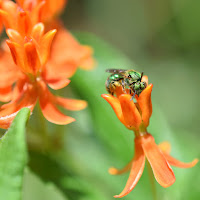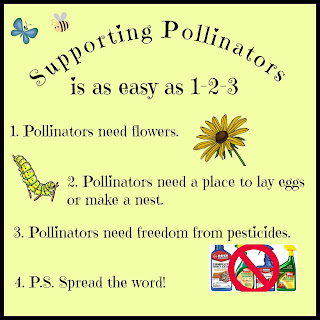This is a brand new book released just this week, and I got my
pre-ordered copy immediately. The range for this field guide includes Georgia
as the southern end while the northern end reaches New Jersey. West Virginia is
included but Tennessee is not. The trio of authors paired up their excellent
plant knowledge with some of the best plant photographers to include details
for over 1200 wildflower species (including a few non-native ones that you might find).
It has an excellent overview section that discusses the
‘ecological factors that determine where plants grow’ from sun/shade to
moisture, elevation, soil makeup, and more. These are very important
considerations, and I like that it was included. This book also includes a thoroughly
useful description of plant families (grouped by Magnoliids, Monocots, and True Dicots), and
the genera that they include. This section as well as the over 60 pages that
precede the plant profiles is wonderfully educational. I felt like I was in a
class, but it was a class that I wanted to
be in!
At first you might think this is another flower-color-oriented
seek-and-find field guide. It has that capability, pictures are arranged by
color, but this field guide has smarts too – a simple key that walks you
through characteristics to a specific section of that color. After identifying
the flower color, the key directs you to choose the flower shape (bilateral, radial,
composite, or undistinguishable – the inside cover of the book has good
pictures of these); if it’s radial (a round-shaped flower), then determine the number
of petals (anywhere from 2 to 7+). The
next step is to determine leaf shape (simple vs. divided), leaf arrangement
(alternate, opposite, whorled, basal), and leaf margins (entire, toothed, lobed).
 |
| Penstemon digitalis, showing bilateral symmetry |
Let’s take an example, using a common white flower called
beardtongue (Penstemon). It is white and the flower shape is bilateral (e.g., you could cut it in
half and the two sides would match, see picture with red line through the center of the flower). The leaves are simple and opposite and the leaf margins are toothed. Using the key on page 48, that directs us to page 77 which
is the start of the section of white flowers that match that criteria (and
which continues through page 81). The plant we’re looking to identify is the
third one on page 79: Penstemon digitalis.
If you can’t get a match, consider checking other color
areas (perhaps it is really a light purple or a purple flower is more reddish …).
I’ll admit that I was surprised to find butterfly pea (Clitoria mariana) in the blue section while spurred butterfly pea (Centrosema virginianum) is in the red
section. Clearly what is red-blue to some is blue-purple to others.
Because leaves are part of the key, don’t expect to find all
the blue species of the same genus – such as violets – in the same section. If you think it is a violet, you
can still go to the index, find all the violets (Viola) and then look up each of them. Of course, the book itself
had to exclude some species, limiting the choices to those ‘most likely’ to be
found ... so not every violet is in the guide.
Plant details include a photo, a range map (purple shading
on the map means indigenous to that area, orange is outside of its range –
which is true for my area for this Penstemon
species where it is grown as a garden plant), as well as flowering timeframe,
size, and a very detailed description of the plant and its natural habitat.
I believe in having an assortment of references so I’ll just
make a mention as to how this field guide might differ from others you might
use in Georgia. The most recently published was Linda Chafin’s 2016 book, “Field Guide to
the Wildflowers of Georgia and Surrounding States.” This book is organized by dicots
and monocots and then by families within those groups; a color thumbnail section is
included in the back for searching by flower color. I reviewed this one in 2016 and
still use it a lot; you can read my review here.
An older book is “Wildflowers of Tennessee, the Ohio Valley, and the Southern Appalachians,” first published in 2005 and updated most recently in 2018. It is arranged by family but includes a color thumbnail section in the beginning. Some of the families include a family key. It is popular with some of my Georgia friends.
An even older book (and one of the ones that I started with even though Georgia is not part of its range)
is the 1977 “Newcomb’s Wildflower Guide.” I mention this one because it has a
similar approach to having the reader figure out basic characteristics and then
going to the section that matches the answers. It doesn’t have photographs and
is not organized by color, but it does have great line drawings. It also
includes shrubs and vines.
So, if you’re in the mood for new field guide with all the
current names, fabulous pictures, and a heaping helping of good knowledge,
check out Wildflowers of the Atlantic Southeast by Laura Cotterman, Damon
Waitt, and Alan Weakley. Click the linked name of the book above to see pictures
from inside the book.


























